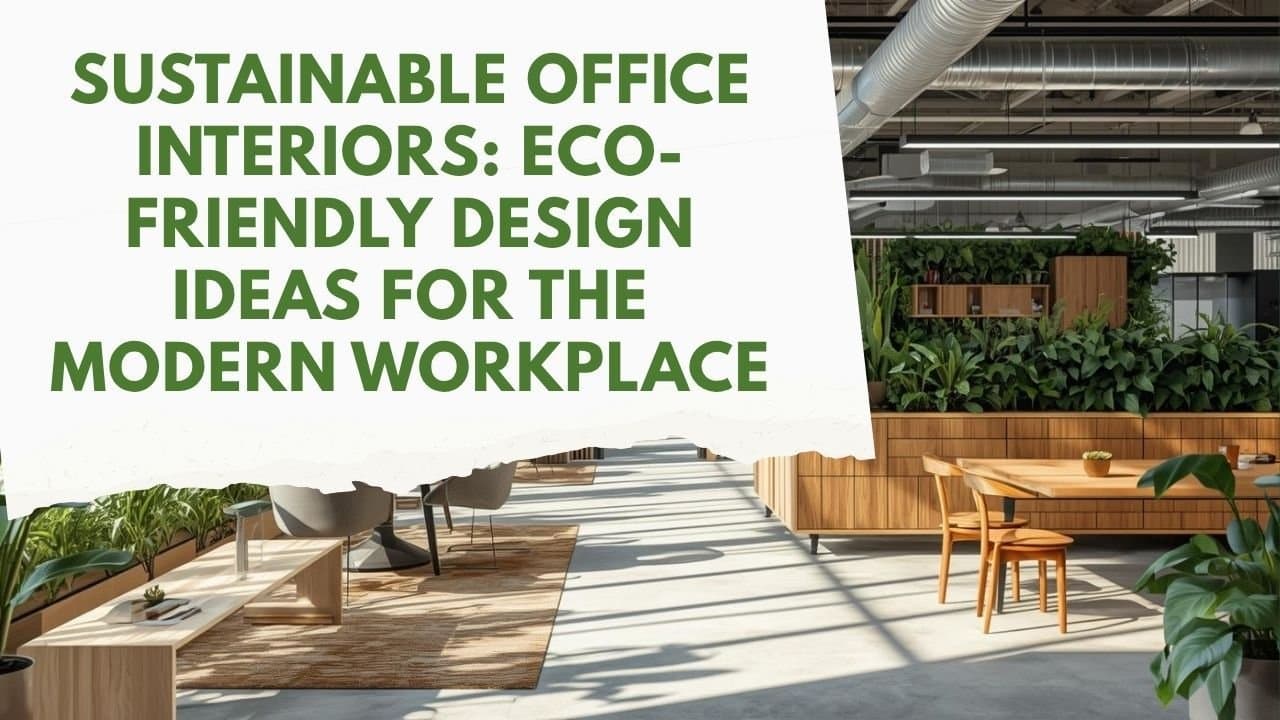In today’s evolving corporate landscape, sustainability has become much more than a buzzword it’s a responsibility that defines how businesses design and build their environments. Modern companies are increasingly recognizing that their physical workspaces are not just about functionality or aesthetics, but about creating an office design that supports the planet, promotes well-being, and inspires productivity.
A thoughtfully designed sustainable office interior reduces environmental impact while reflecting an organization’s commitment to social responsibility. From using eco-friendly materials to optimizing natural light and air quality, sustainable design and build practices are transforming the modern workplace into a space that values both people and the planet.
In this blog, we will explore the most effective eco-friendly office design ideas that align sustainability with modern functionality, helping companies create greener, healthier, and more inspiring workspaces.
1. Use of Recycled and Natural Materials
One of the most impactful steps in sustainable office design is selecting materials that are recycled, reclaimed, or naturally sourced. Furniture made from reclaimed wood, recycled metals, and eco-friendly fabrics minimizes waste while giving a warm, organic look to interiors. For flooring, materials like bamboo or cork are not only sustainable but also durable and aesthetically pleasing.
A responsible design and build process ensures that every material choice — from desks to wall finishes — contributes to reducing the carbon footprint while enhancing workplace comfort.
2. Energy-Efficient Lighting Solutions
Lighting accounts for a significant portion of energy use in offices. Incorporating LED lighting, motion sensors, and smart systems can greatly reduce energy consumption. Natural lighting should also be prioritized through large windows, skylights, and open layouts that maximize sunlight penetration.
An office design that integrates daylight not only cuts costs but also improves employee mood and focus — an essential factor in maintaining productivity.
3. Incorporate Biophilic Design Elements
Biophilic design — the concept of bringing nature into the workspace — is central to sustainable interiors. Adding indoor plants, green walls, and natural textures helps purify air, reduce stress, and enhance creativity. Employees working in environments rich in natural elements tend to feel more connected and motivated.
This trend in design and build encourages harmony between modern aesthetics and natural serenity, making offices more vibrant and human-centered.
4. Optimize Space Planning and Flexibility
Efficient space utilization is an overlooked but crucial aspect of sustainability. Modular furniture, multipurpose areas, and adaptable layouts reduce the need for frequent renovations and minimize waste over time.
A flexible office design ensures that workspaces can evolve with business needs, allowing companies to stay agile while maintaining environmental mindfulness.
5. Improve Indoor Air Quality
Sustainable offices prioritize the health of their occupants. Integrating advanced HVAC systems, air purifiers, and indoor plants improves air circulation and reduces harmful pollutants. Paints, adhesives, and finishes should be low in VOCs (volatile organic compounds) to ensure clean, breathable air.
Incorporating these features within the design and build phase of office projects helps create a healthier and more productive environment.
6. Water Conservation Practices
Eco-friendly offices also focus on responsible water usage. Installing water-efficient fixtures like low-flow faucets, dual-flush toilets, and sensor-based systems significantly reduces wastage. Harvesting rainwater and using recycled greywater for landscaping are additional sustainable measures.
Such thoughtful office design practices show that every drop saved contributes to a larger ecological impact.
7. Integrating Smart Technologies
Technology plays a vital role in creating sustainable workplaces. Smart thermostats, energy monitoring systems, and automated lighting controls help manage energy use efficiently. These systems not only reduce utility bills but also contribute to long-term sustainability goals.
A well-planned design and build project integrates such technology seamlessly into the office layout, ensuring a balance between innovation and environmental responsibility.
8. Sustainable Furniture and Decor Choices
Selecting furniture made from responsibly sourced or upcycled materials reinforces an organization’s commitment to sustainability. Many modern manufacturers now offer office furniture that meets eco-certifications. Choosing minimalistic décor with long-lasting materials ensures both visual appeal and durability.
This approach to office design balances style, comfort, and eco-consciousness an ideal combination for the modern workplace.
Conclusion
Sustainability in office interiors is no longer a trend it’s a strategic necessity for forward-thinking businesses. A well-planned sustainable design and build approach does more than protect the environment; it enhances employee well-being, boosts productivity, and strengthens brand reputation.
By investing in eco-friendly office design, companies communicate their values clearly — that they care about their people and the planet. The result is a workspace that not only looks inspiring but also operates efficiently, responsibly, and in harmony with nature.
As the modern workplace continues to evolve, sustainability will remain at the heart of smart office design shaping a greener, healthier, and more future-ready world of work.

